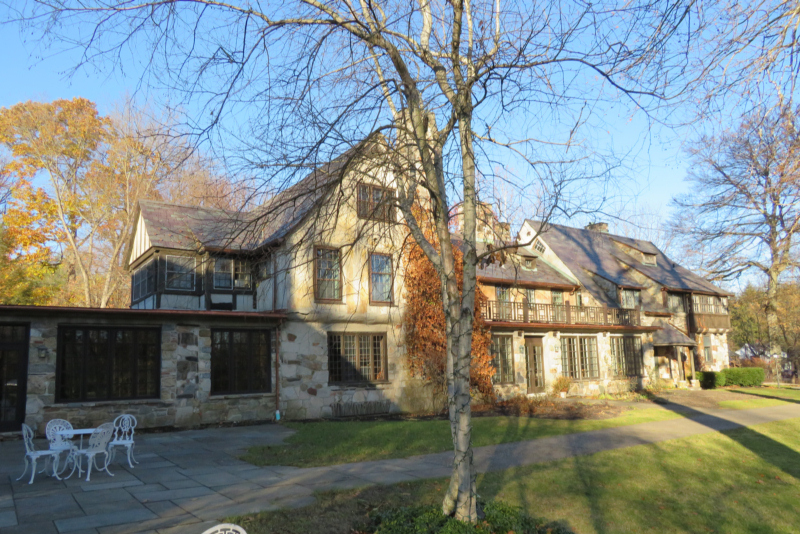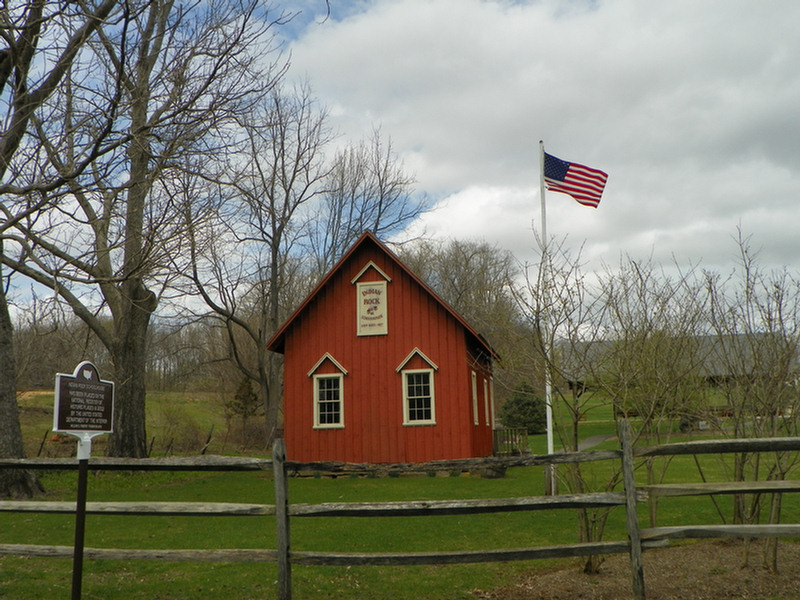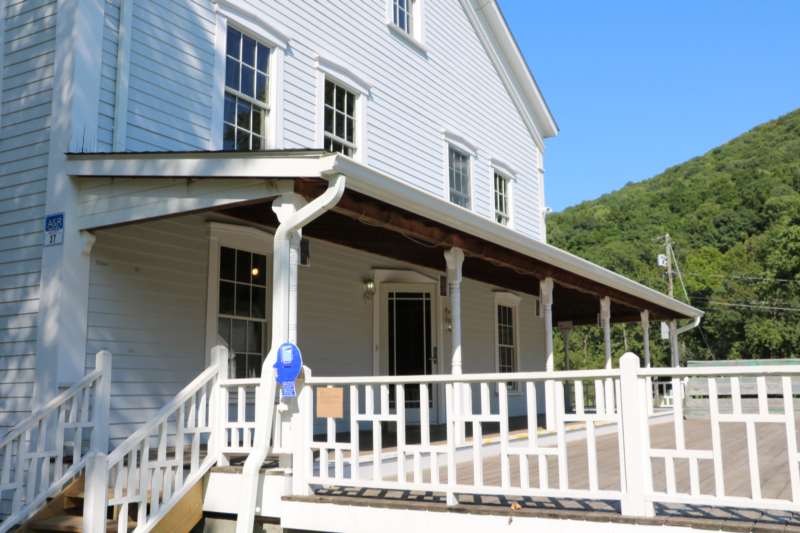Historic Places Attractions Art & Antiques
Troutbeck 1765
515 leedsville rd
Amenia, NY 12501
845-789-1555
website
Troutbeck was settled by the Benton family who built the manor in 1765. Myron Benton, born there in 1834 was a nature lover and made Troutbeck a center for writers including John Burroughs, Henry David Thoreau and Ralph Waldo Emerson. Joel Spingarn, founder of Harcourt Brace & Company, and his wife Amy took over the property in 1904. In 1917 the home burned down and was rebuilt.
Starting in 2007 the properly was used briefly as an inn and in 2017 It was bought by Anthony Champalimaud, an artist, and hotelier. He restored, furnished and reopened the inn in the same year. See website for room and meal reservations.
Beekman Park 1920's
5270 US-44
Amenia, NY 12501
On the site of Beekman Park was the former Lake Amenia, a shallow, one and a half acre-wide freshwater lake in the center of Amenia. The lake first originated as a millpond for a local corn and grain mill in the area. Eventually, during the 1920s, a dam was built in the millpond, creating Lake Amenia. The freshwater lake became an instant tourist destination two hours north of New York City. People took advantage of the lake, including Beekman and Beekman Inc., a tourist agency developed by two brothers. They used the area around Lake Amenia to develop theaters a pool hall in the post office, beaches, and even a brand new golf course. Summer vacationers would take the train to Amenia Station on the New York Central Railroad to visit the lakeside resorts and summer camps on the lake.
Indian Rock Schoolhouse 1850
Mygatt Road
Amenia, NY 12501
website
On the National Register of Historic Places
The school was built around 1850, possibly slightly earlier. A decade before New York issued standard plans for a rural one-room schoolhouse with separate entrances for boys and girls to a single open room inside. Children learned their ABCs there until 1927 when all the "common schools" of the area were centralized in the towns of Amenia and Millerton.
Amenia built 12 such schools around the town. The one on Mygatt Road acquired the name "Indian Rock" from a nearby lookout supposedly used by the area's Native American tribes.
Beth David Synagogue 1929
3344 East Main Street
Route 343
Amenia, NY 12501
History congbethdavid.org
On the National Register of Historic Places
Beth David is a small brick European-style building erected in the late 1920s by the area's small community of Russian Jewish emigrants. Over the years, its membership has dwindled and it has moved from its original Orthodox affiliation to Conservative, and eventually to Reform practices. It was added to the National Register of Historic Places in 2002.
St. Thomas Episcopal Church 1851
40 Leedsville Road
Amenia, NY 12501
stthomasamenia.com/
On the National Register of Historic Places
St. Thomas was built between 1850 and 1852 from a design by the noted Victorian
architect Richard Upjohn (architect of the world-renowned Trinity Church, Wall Street, New York City), and today is considered one the finest examples of the "country gothic" style popular during this era. Typically for the small farm community of its time, much of the construction was carried out by the parishioners themselves, with bricks produced on a local farm and foundation stones, sand, and the chestnut rafters hauled by their own teams and wagons.
The Smithfield Church 1847
656 Smithfield Valley Road
Amenia, New York, 12501
thesmithfieldchurch.org/
On the National Register of Historic Places
Smithfield Church is a historic Presbyterian church located in the Smithfield hamlet of Amenia. It was built about 1847-1848, and is a one-story, Greek Revival style heavy timber frame church sheathed in clapboard. It has a stone foundation and gable roof and features a tetra style portico supported by four Ionic order columns. The church was refurbished in 1938. Also on the property is a contributing horse shed, Sexton's House (1857), and church cemetery, with the earliest grave dated to 1737. George Whitefield (1714-1770) preached an open air revival sermon at the church in June 1770.
It was added to the National Register of Historic Places in 2012
Lewis Mumford House 1837
Leedsville Road
Amenia, NY 12501
topic/Lewis%20Mumford
On the National Register of Historic Places. Mot open to the public.
The Mumford house is a white Federal style building built in the 1830s.
Lewis Mumford and his wife bought the house in the late 1920s, originally using it as a summer house. By the mid-1930s, they decided to make it their permanent residence for a few years. That period extended to more than half a century, the rest of Mumford's life. His experience of living in a rural area informed some of Mumford's thinking about cities and how they should be shaped. In 1999, a few years after his death, the property was listed on the National Register of Historic Places.
Hendrik Winegar House 1761
Leedsville Road
Amenia NY 12501
On the National Register of Historic Places. Historic marker only.
Hendrik Winegar settled on a large family owned parcel in Amenia Union and began construction of the stone house in 1761. The house featured a clapboard wood frame, thick fieldstone walls and a steeply sloped roof, which gave it a distinctive appearance in the vastly rural surroundings. Contrasting from the rest of the house's exterior, its front (east) side was built with brick and 30-foot-long heavy timbers were laid horizontally and spanned from the front to the rear of the house to support its floors.
The Amenia Historical Society attempted to save the house in 1971 but their effort to raise funds to acquire it failed. A snowstorm in January 1996 took its toll on the structure, resulting in its collapse.
Dutch's Spirits at 1920's
Harvest Homestead Farm
98 Ryan Road
Pine Plains, New York 12567
dutchsspirits.com
In the later years of Prohibition, famous mobster Dean Schultz financed a massive underground distilling operation. Comprised of interconnected secret passageways, false chimneys, and bunkers, the operation produced thousands of gallons of moonshine in its heyday.
Federal agents raided the site on October 10, 1932 and discovered the massive illegal liquor operation via a tunnel entrance. .
The site has been added to the State and National Register of Historic places. Dutch's Spirits is now a legal distillery built in the footprint of the original bunkhouse site, and portions of the tunnels and bunkers remain available for viewing.
17 miles North West
Copake Iron Works Historic District 1872
253 NY-344
Copake Falls, NY 12517
friendsoftsp.org
A national historic district including the remaining structures of the Copake Iron Works, an iron extraction and production operation established in the mid-19th century. It includes the remains of a charcoal blast furnace (ca. 1872), frame office and attached brick powder storage building, brick engine house and pattern shop, four frame workers houses, and a substantial Greek Revival dwelling. Also included in the district is Church of St. John in the Wilderness.
It was listed on the National Register of Historic Places in 2007.[1]
Restoration of the site has been undertaken by Friends of Taconic State Park.
22 miles north
Dover Stone Church 1600's
3128 NY-22
Dover Plains, NY 12522
townofdoverny.us/Stone_Church
The "Stone Church" is an ancient cavern on the Stone Church Brook in Dover Plains hewn by time in the formation similar to a church's cathedral stained glass window.
According to local legend, the site was a refuge for Pequot Sachem Sassacus and his warriors as they fled from the English Army in the 1600s.
In the 1800 and early 1900s, the Stone Church was a popular local attraction for New York City dwellers to visit and enjoy the recuperative fresh air and beauty of upstate New York.

Troutbeck

Indian Rock School House

Temple Beth David

St. Thomas Episcopal Church

The Wassaic Project
Copake Iron Works
Copake Iron Works
Copake Iron Works